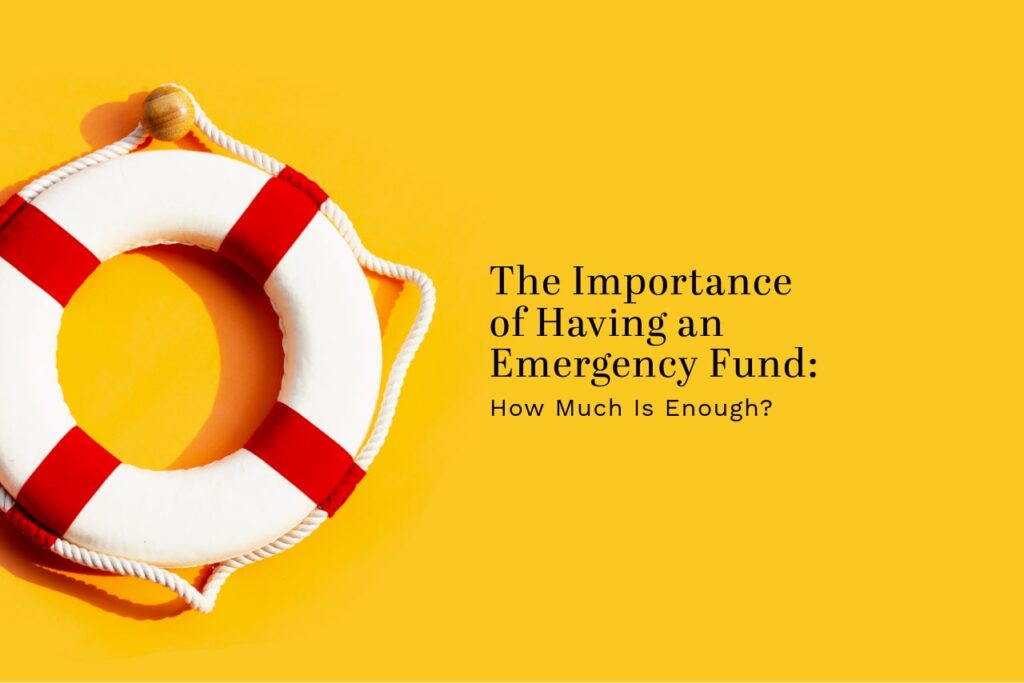Finding the ideal emergency fund amount to support your needs
Life is unpredictable, and unexpected expenses can arise at any time. Medical bills, car repairs, job loss, or home maintenance issues can cause sudden financial strain. Having an emergency fund can provide you with a financial cushion, helping to manage these unexpected costs without the need for high-interest debt or significant lifestyle adjustments. Understanding how much to set aside and how to build an emergency fund can be important steps in financial planning.
Why an Emergency Fund Matters
Unexpected expenses are a common reality, and without a financial buffer, you may find yourself relying on credit cards, loans, or borrowing from retirement savings. These options can lead to additional financial strain, as debt often comes with interest costs that make repayment more challenging over time. An emergency fund acts as a dedicated reserve, allowing you to handle unforeseen costs while maintaining your long-term financial plans.
Having funds set aside for emergencies may also provide flexibility in decision-making. Whether facing a job loss, medical expense, or urgent home repair, having an emergency fund may provide you with more choices for addressing financial challenges.
What is the Right Emergency Fund Amount for Me?
Your emergency fund amount varies depending on personal circumstances, including income level, job stability, monthly expenses, and financial obligations. While general recommendations suggest saving three to six months’ worth of essential expenses, individual situations may call for adjustments.
- Single-income households: Those relying on one source of income may benefit from saving closer to six months’ worth of expenses, as losing a job could result in a longer period of financial uncertainty.
- Dual-income households: If both partners in a household earn an income, the need for a larger emergency fund may be reduced, though savings should still cover at least three months of expenses to account for unexpected events.
- Self-employed individuals or freelancers: Those with variable income may consider saving six months or more of expenses due to the unpredictability of earnings.
- Families with dependents: Households with children or other dependents may want to factor in additional costs, such as healthcare and childcare, when determining an appropriate emergency fund amount.
- Individuals with high fixed expenses: Those with large mortgage payments, car loans, or other significant financial commitments may need a larger fund to cover these obligations during periods of reduced income.
Where to Keep an Emergency Fund
An emergency fund should be easily accessible but kept separate from daily spending accounts to prevent unnecessary use. Some common options include:
- High-yield savings accounts: These accounts offer interest on savings while allowing quick access to funds when needed.
- Money market accounts: Similar to savings accounts, money market accounts may offer higher interest rates and limited check-writing privileges.
- Traditional savings accounts: While often offering lower interest rates, they provide the potential for immediate access to funds in an emergency.
Investments in stocks or long-term assets may not be suitable for emergency funds, as market fluctuations could reduce the value of savings when immediate access is required.
Building an Emergency Fund
For those starting from scratch, building an emergency fund may take time. Setting realistic goals and contributing consistently can help establish savings over time. Some strategies to consider include:
- Setting a monthly savings goal: Even small, regular contributions can add up over time. Automating transfers to a dedicated savings account can help maintain consistency.
- Reducing non-essential expenses: Evaluating discretionary spending and reallocating funds to savings can help accelerate progress.
- Using windfalls and extra income: Tax refunds, bonuses, or side income can be directed toward an emergency fund.
- Adjusting savings over time: As expenses change, reassessing savings goals periodically can help maintain an adequate emergency fund.
When to Use an Emergency Fund
An emergency fund is meant for urgent, unforeseen expenses rather than discretionary purchases. Some appropriate uses include:
- Medical emergencies: Unexpected healthcare costs that are not covered by insurance.
- Job loss: Covering essential expenses while seeking new employment.
- Urgent home or car repairs: Addressing issues that affect daily life and safety.
- Unexpected travel: Covering costs for family emergencies or other urgent situations.
If an emergency fund is used, replenishing it should be a priority to maintain financial preparedness for future unexpected events.
Protect Your Finances from the Unexpected
An emergency fund serves as a financial buffer against unexpected expenses, helping you manage challenges without relying on high-interest debt. The amount needed varies based on personal circumstances, with considerations for income stability, financial obligations, and household size. Keeping these funds in an accessible yet separate account can help you preserve your savings for true emergencies. Establishing and maintaining an emergency fund may take a while, but consistent saving habits can help you build financial resilience over time.
Illuminated Advisors is the original creator of the content shared herein. I have been granted a license in perpetuity to publish this article on my website’s blog and share its contents on social media platforms. I have no right to distribute the articles, or any other content provided to me, or my Firm, by Illuminated Advisors in a printed or otherwise non-digital format. I am not permitted to use the content provided to me or my firm by Illuminated Advisors in videos, audio publications, or in books of any kind.







